Among the most ardent of electric piano enthusiasts, the name Buz Watson has become synonymous with the golden age of Fender Rhodes production. For a brief period—just over six months, ranging from roughly November 1971 through June of the following year—that name appeared sporadically, stamped in red ink, on top of Rhodes harp brackets. While these dates were already considered to yield highly desirable instruments thanks to unrelated but palpable production features, the occasional presence of this stamp has advanced the theory that Buz Watson was an innovator whose work was distinguished enough to stand out from what was otherwise anonymous factory labor.
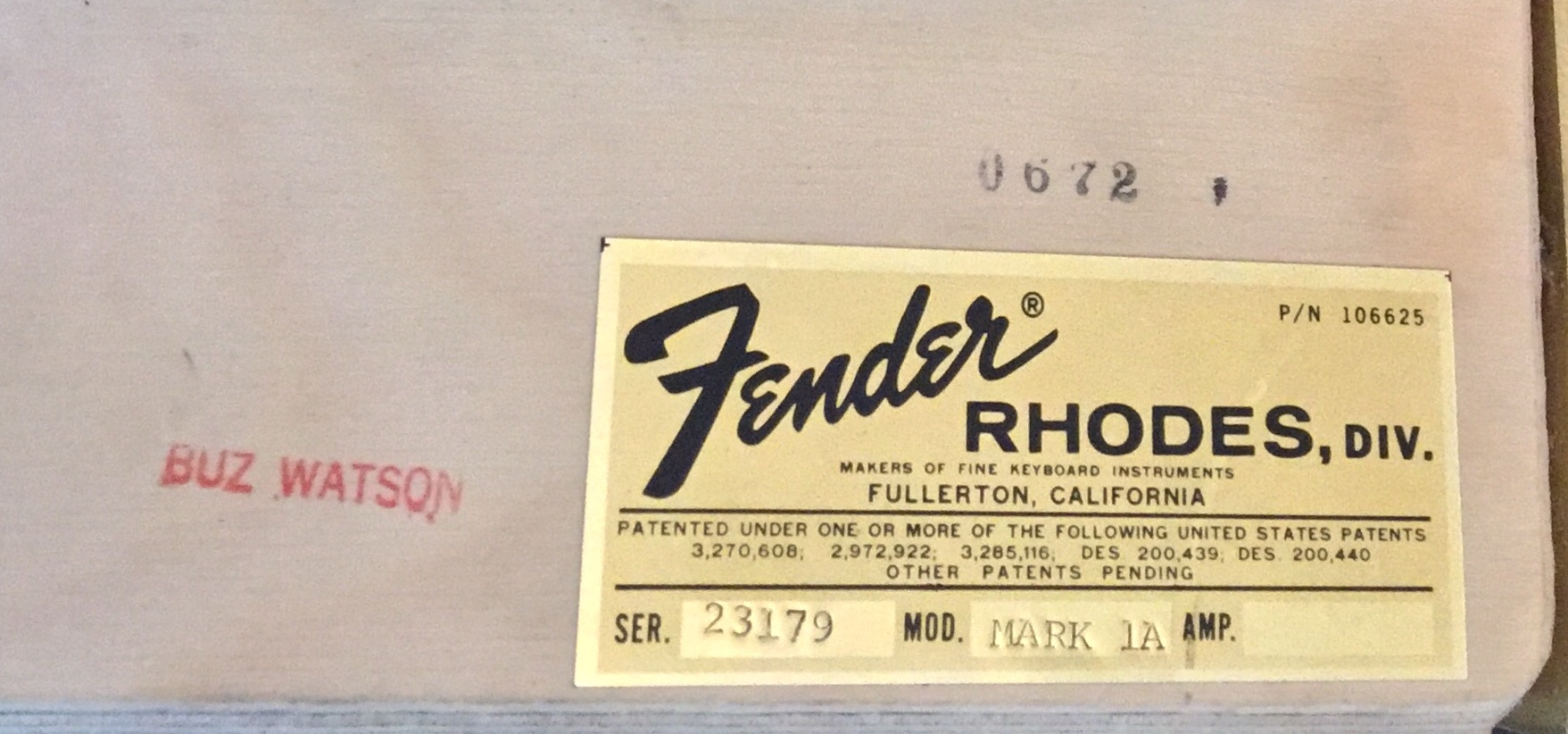
Within the resurgent vintage keyboard market, instruments bearing his name are now often referred to as "Buz Watson models," implying that they contain a special ingredient of sorts that somehow separates them from all other Rhodes pianos. Whether or not this trend can be traced to any tangible qualities within the pianos themselves, however, has proven difficult to ascertain.
While it has long been established that the stamp represents a simple mark of quality control, beyond that, very little is known about just who Buz Watson was and what sort of work it was that he was doing. Ironically, the absence of factual knowledge has only contributed to the increasing lore that surrounds this relatively small number of pianos, and Buz Watson—while not quite at Tadeo Gomez levels of renown—is now among the small handful of Fender employees whose names have transcended their job descriptions.
The popular narrative concerning Buz Watson's employment at Fender is that, following Harold Rhodes' refusal to incorporate Watson's design enhancements into the tine-based piano that bore his name, the disgruntled employee up and left, taking his stamp with him and putting an abrupt end to what, nearly a half-century later, would become the most sought-after electric pianos that were ever produced.
Buz, it was said, retreated to his apartment, where, free from management overreach, he would implement his Rhodes modifications for a small private client base. While the romantic image of the idealistic craftsman eschewing corporate business constraints in order to see a vision through may have contributed to the intrigue of the man and his work, the true story of Buz Watson is quite different.
Clyde Curtis Watson was born on June 21, 1933, in San Bernardino, California. Enthralled with airplanes—particularly model airplanes—from a young age, he soon earned the moniker "Buz" because there was seemingly always a plane of some sort buzzing around wherever he was present. It was model airplanes that would remain the great passion of Buz's life, but there were times when his love for music and baseball vied for the top spot.
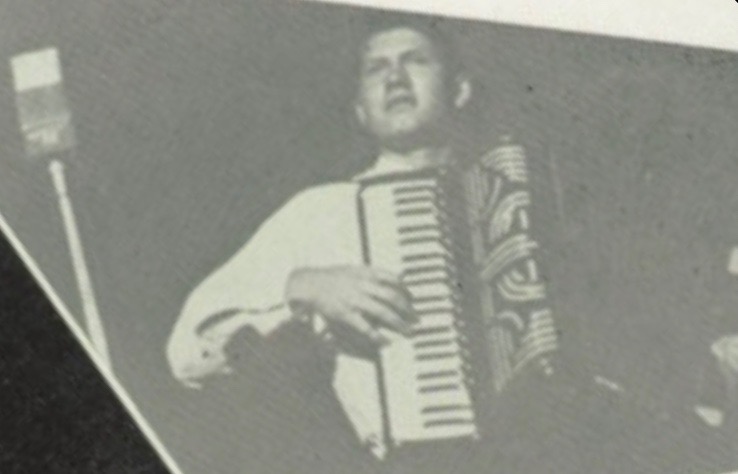
A grammar school–aged Buz was swept up in the accordion craze of the day, and his quest to master the virtuosic novelty tune "Dizzy Fingers" led to lessons at a local music school. He took to the instrument naturally and was performing in public regularly by the time he was a teenager, most often at talent shows and private parties, but also restaurants where he would serenade diners Lady and the Tramp–style.
Considered one of the best high school baseball players in all of California, as well as an honors student who was vice-president of his class, Buz had his sights set on a baseball scholarship to the University of Southern California. Instead, with the Korean War in full swing, he was drafted into the US Army and promptly shipped off to Anchorage, Alaska, where he was tasked with building and repairing helicopter motors.
Upon being discharged and returning to California, Buz enrolled in community college and played in a competitive "Night Ball" baseball league, but his serious academic and athletic pursuits were already behind him. While in Alaska, much of his free time had been devoted to teaching himself to play piano, a task made easier by his years of formal accordion lessons. As with the accordion, he progressed quickly, and although he would begin a series of jobs related to the aircraft maintenance that he had learned on Elmendorf Air Force Base, it was the piano that became the focal point of his immediate post-Army years.
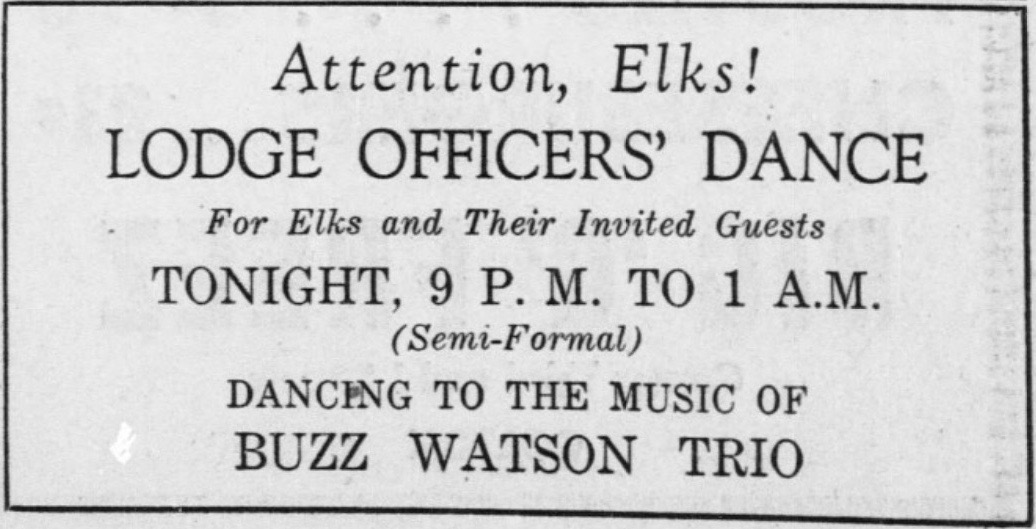
Even in those days before rock 'n' roll, Southern California could still boast of a ripe and eclectic music scene that afforded musicians ample opportunity to ply their trade. Buz was a connoisseur of radio and early television, and the hodgepodge of styles they beamed out is what informed his taste. From swinging big bands, orchestral jazz, and sophisticated show tunes to tropical calypsos, cowboy singalongs, and sentimental schmaltz, Buz listened to and played it all.
By the latter half of the '50s, he was gigging out at least several nights a week in a variety of settings, be it leading small instrumental groups in nightclubs, accompanying crooners in hotel lounges, filling out dance bands in large halls, or providing background ambience at cocktail parties. Indeed, Buz was among that rare breed of musicians who would perform anywhere and everywhere just for the sheer love of it.
Buz married in 1961 and the couple would have three daughters before the decade was out. The responsibilities of a growing family necessitated steadier employment, and in the very late '60s, Buz went to work for the Fender Electrical Instrument Company in Fullerton, about a 40-minute drive from his home in Riverside. By this point, the Fender plant—now under the ownership of the CBS conglomeration—had swelled into the largest musical instrument manufacturing facility in the world.
After years of delays and false starts, the Fender-Rhodes electric piano was added to the company's already star-studded roster of rock 'n' roll tools in 1965 and proved—despite early growing pains in both sound and design—to be yet another success. It was common practice in those days at Fender for new hires with a musical background to be assigned to the production team of the instrument that they played, and that is how Buz first entered into the Rhodes orbit.
The Rhodes itself was very much a feat of 20th-century American industrial engineering, with the assembly of every piano broken down into small, repeatable segments. The product would take shape on a rolling conveyor system where stations had prescribed tasks and techs to carry them out.
Because each of its hundreds of interlocking parts was mounted and adjusted by hand, pianos could—and often did—vary significantly, with individual laborers operating with a fair amount of discretion. Still, such a process meant that a single worker could exert only so much influence on the piano as a whole. Having had no previous experience with tuning, let alone manufacturing an instrument, Buz received all of his training on the job.
Unsurprisingly, he picked up the trade quickly, with his detail-oriented approach landing him the position of "final tech," from which he would soon graduate into "final quality control inspector," the most advanced stations on the factory floor.
Final techs (there were two) would receive pianos that had already been completely assembled but still required a thorough setup. Housed in small soundbooths, they were responsible for ensuring that all mechanical parts had been installed and were interacting properly with one another. Subtle adjustments related to the alignment of various components such as the tone bar, pickup rails, and hammers could result in dramatic changes that were often the difference between good and bad pianos, both in feel and tone.
Once these alignments were improved and the action had been regulated, the tech would play a brief series of test sequences—assorted intervals, scales, and chord voicings—up and down all registers of the keyboard to check pitch, damper response, and fine-tune the timbre and volume of all individual notes. Following this, the piano was ready for final inspection.
While it was the final tech who may have had the most tangible impact on the completed instrument, the final QC inspector was well-versed in every stage of production. After only a year or so, Buz moved into this role, joining one Robert Kehoe, a member of the Rhodes team dating back to its earliest days, at the very end of the line. In addition to a slight wage increase, the appeal of this position stemmed from its lack of monotony. Buz and Bob were responsible for ensuring at least some semblance of consistency across all of the pianos; this required them to verify the work that had been done by the entire Rhodes department, ranging from cosmetics to mechanics to sound and overall playability.
Although they would often make last-minute tweaks and tuneups, each piano was allotted only about 20 minutes within this station (later shortened to 15 minutes or less), so any piano with significant or time-intensive issues would be sent back to the work area responsible for the gaffe. During particularly busy stretches, longtime Rhodes production manager (and Buz's boss) Ron Roscom would put his own mechanic skills to use and hop in the tiny soundbooth with either Buz or Bob to do larger repairs himself in an effort to save time. When the work was deemed complete, the final QC inspectors would stamp their seal of approval, put the lid on, and press a button that enacted a hydraulic boost that lifted the Rhodes right up from the workbench into a shipping crate and off to its next destination in the world.
Fender's proximity to Los Angeles and its seemingly endless string of commercial recording studios had the unintended consequence of not-infrequent requests for the factory to dispatch techs to implement various tuneups and adjustments. As the Rhodes began to soar in popularity, Buz was the employee most often deployed on these missions, thanks largely to his mechanical know-how, but also because his own performance background allowed him to communicate with other keyboard players naturally.
Through a combination of satisfied customers and rising demand, this traveling serviceman role soon began to extend beyond Fender. While still a full-time staffer on the assembly line, Buz started taking on freelance Rhodes work. Although the moonlighting was sporadic at first, it was a harbinger of things to come.
The scope of these onsite jobs could vary significantly—with the most frequent request by far being for a lighter, more responsive action—but they brought the underlying issue of manufacturing inconsistencies to the forefront. Buz was hardly the only worker on the line to voice concern about the compromises that mass production put on an instrument that relied so heavily on its assembly and setup to achieve peak performance. Harold Rhodes, whose own striving for perfection nearly kept his creation from going into production at all, was a frequent visitor on the factory floor, chatting cordially with the workers and always open to suggestions and potential improvements. He appreciated Buz not only for his meticulous approach but also for the jazzy renditions of old pop standards that Buz would reel off on the nearest Rhodes at his request.
Rather than advocating for specific design overhauls, Buz frequently implored Harold to enact more stringent quality guidelines and checks, an advancement that would have resulted in superior pianos, but which was little more than a pipe dream. CBS was in the business of selling instruments and, as Fender's marketing guru Don Randall noted, the Rhodes was selling "by the truckload." Incremental improvements could not come at the cost of decreased sales.
The fact that Buz's now famous inspector's mark appeared for such a brief period has fostered the notion that his tenure at Fender was short-lived, with the disappearance of the stamp taken as a sign of his departure from the factory. Fender's company-wide QC markings, however, were in constant flux, evolving gradually from the hastily penciled names and initials hidden inside the groundbreaking solidbody guitars of the early '50s into a more formalized system.
CBS evidently preferred that their products not showcase the names of factory workers, no matter how concealed they may be, and instituted a mandate for more generic branding. Thus, the absence of Buz's stamp equated not to his exit, but rather to the growing influence of a corporate entity. Bob Kehoe's less celebrated "B. Kehoe" QC stamp, for instance, appeared for the same short stint as Buz's, but Bob remained in the final inspector role at the factory right up until Rhodes production ceased in 1985. Buz may very well have had that same type of longevity on the Rhodes line had it not been for turmoil in his personal life. He left Fender at the end of 1975 following a contentious divorce.
The legend of Buz Watson began to take form only after he had left the Fullerton factory. Buz's service calls had been a resounding success, with many of the biggest studios of the era lauding his Rhodes improvements. While his freelance work heretofore had been confined almost entirely to studios, as well as an occasional house call for pop stars such as Leon Russell or Richard Carpenter, he began offering his Rhodes modifications from his home once he was no longer employed by Fender.
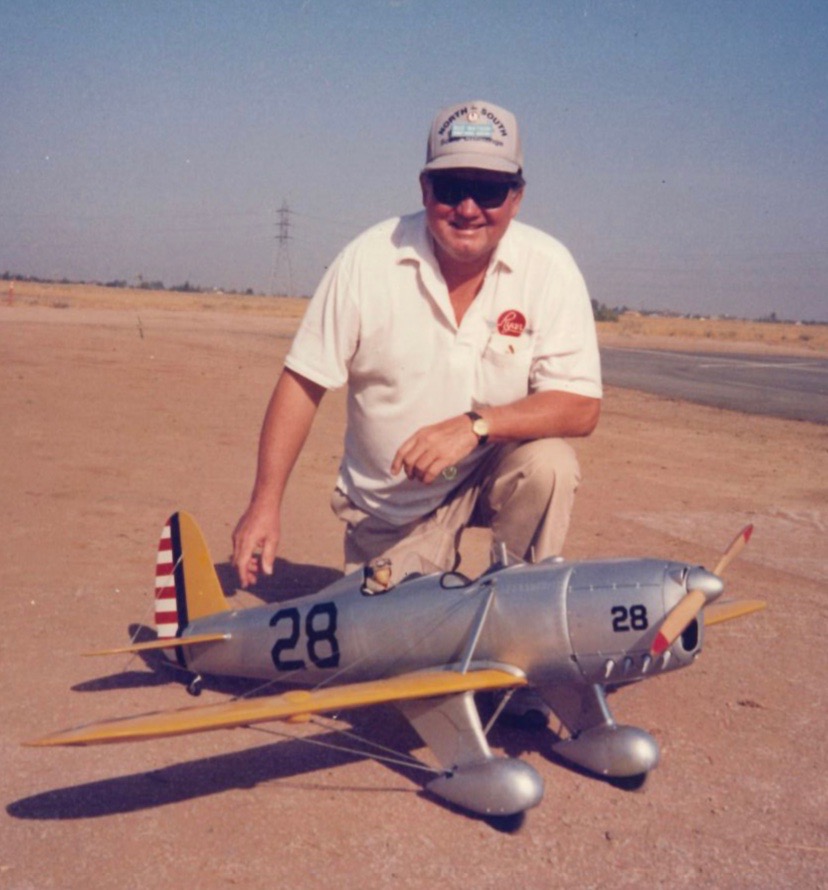
Word had trickled down from the studios to LA's hotbed of musicians about a tech who was capable of getting things out of a Rhodes that no one else could. Hyperbole or not, that soon became the belief shared among many of California's keyboard players. Buz's timing was impeccable. The Rhodes was reaching the zenith of its popularity, becoming a ubiquitous presence on stages and recordings across all genres of popular music. Desire for his services was such that, rather than looking for new employment, he decided to ride the Rhodes wave for as long as it could sustain him.
Buz's enthusiasm for building and flying model planes had never waned but his newfound freelance status afforded him the time to immerse himself in his beloved pastime with a renewed fervor. Ever the entrepreneur, he soon parlayed this passion into an additional source of income, designing and building models on commission for other zealous hobbyists. It was the countless hours spent bringing intricate little wooden planes, boats, and cars to life that had made Buz a perfectionist in the first place and he applied that same handiwork to the Rhodes.
His modest apartment was transformed into a makeshift workshop that was overrun with the tools of his trades, as pianos in various states of repair contended with outspread plane wings and propellers and RC engines for precious counter and table space. Colorful WWII-era fighter planes that Buz was particularly proud of hung down from the ceiling, and the persistent smell of solder and glue filled the stale air. While much of this sort of labor was tedious, it was the kind of detailed craftsmanship that Buz adored, and hours could slip by without his attention being diverted from the task before him.
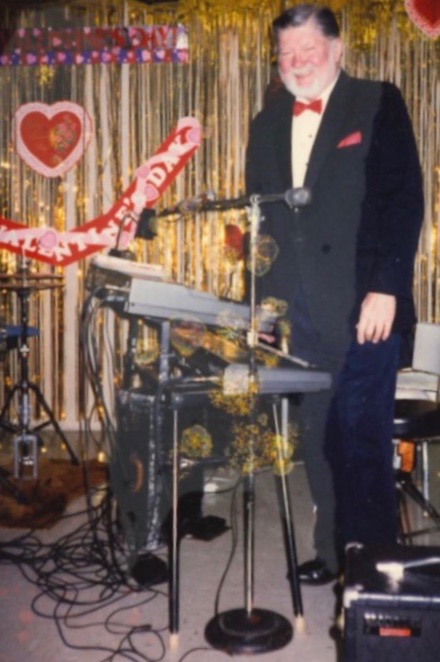
During his marriage, Buz's musical career had been restricted to living room performances on the family's Baldwin home organ. He had missed the nightclub circuit and jumped back into it immediately, working on the models and pianos all through the day before hurrying off to a gig or rehearsal that would last late into the night. Soon, however, there was a backlog of electric pianos awaiting his touch. To meet the rising demand, he enlisted the help of an old friend from Fender, Stephen Woodyard.
Woodyard was something of a renaissance man at the Fullerton factory, starting off as a guitar and amp tech before transferring to the Rhodes R&D department, where he would eventually head the design of the cult classic Rhodes Mark V. In the mid-'70s, he was overseeing the factory's service and repair center and had become well-acquainted with common customer complaints and requests as they related to the Rhodes.
An excellent tech himself, he acted as Buz's liaison with the factory, keeping him well-stocked on parts and up-to-date on the latest Rhodes developments. Intermittently over the next several years, Woodyard would finish up work at Fender and head straight over to Buz's to help out on the "night shift."
If there was no discernible difference in pianos that passed through Buz's inspection at the factory, the same could not be said for those that arrived at his home. Fender, he often lamented, wasn't arranged to manufacture quality instruments but rather to spew out as much product in the shortest amount of time possible. Buz saw his work not so much as an upgrade as it was an attempt for the Rhodes to meet its full potential.
As his reputation became established, he lined up several modified pianos in his already cramped living quarters that showcased the varying degrees of his alterations. Incoming customers would compare the differences and choose the feel and tone that they wanted applied to their own Rhodes.
The procedure most commonly requested of him was what he referred to as a "complete rebuild," or as many of his clients dubbed it, the "Buz Watson Mod." This included standard tweaks such as tuning, voicing, and escapement and strike line checks, but the adjustments that distinguished it were related to the action, hammer tips, and the relationship between the tines and pickups.
Using small razors and hobby knives, Buz would reshape the notoriously heavy action into an early variation of what eventually became known as the pedestal bump mod, altering the degree of lightness based on individual preference. To combat the dull, dead sound of many of the pianos that rolled off the line, he installed harder hammer tips that sweetened the tone and brought out the bell-like quality of the tines, allowing the upper registers to "sing" more clearly.

The overall timbre of the Rhodes, he would explain, was dependent on the distance of the pickups from the tines. Like the rhythm and treble pickups of an electric guitar, adjustments could be made to emphasize a tone that, as he put it, could be either "chime-y" or "melodic." Tweaking that distance slightly to achieve the desired sound, he would listen for proper volume and attack while also bringing out subtle overtones that he said were hidden within the tines.
In place of his old factory stamp, pianos that received these special treatments displayed his business card on the harp, a touch that would be mimicked by Rhodes techs generations later.
Some of Buz's success had stemmed from being the first to offer Rhodes customizations at a time when the instrument was still a new and relatively unknown commodity. Before long, however, there were independent keyboard techs springing up all along the California coast. While not quite at its mid- and late-'70s peak, business still remained steady, with Buz branching out and tuning Wurlitzer electric pianos and even an occasional acoustic piano.
In the early '80s, Chuck Monte offered to train Buz to install his "Dyno My Piano" Rhodes modifications that were dominating smooth jazz and R&B at the time. Buz could've used the extra work, but, never one to shy away from sharing his opinion, he declined the offer, saying that he couldn't stand the sharp, heavily chorused sound.
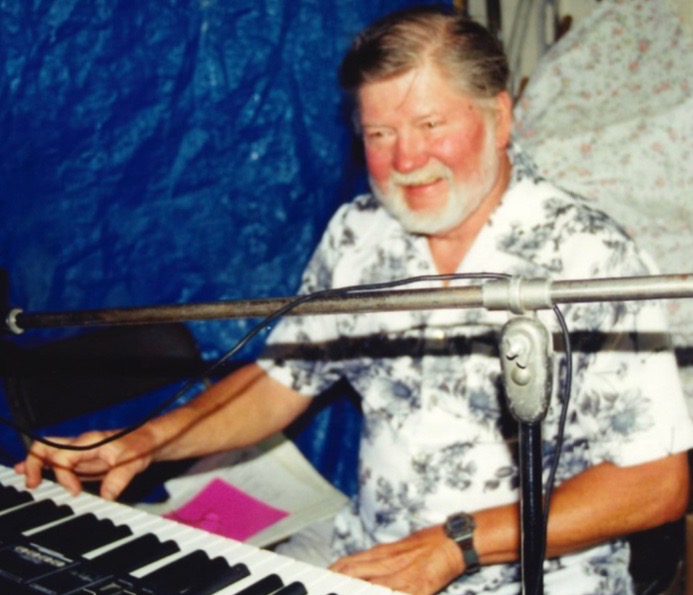
Soon, however, it didn't matter. Music was changing rapidly, with digital synthesizers, keyboards, and sequencers coming to dominate the field. Electro-mechanical instruments suddenly seemed hopelessly outdated, and their steady decline was put to rest once and for all with the explosion of the Yamaha DX7, which, ironically, included a rather thin-sounding Rhodes emulation among its most famous presets.
After the demise of the Rhodes, Buz returned full-time to airplane-related work, increasing his model output and taking on a mechanic position at the Chino Airport, where he specialized in building and restoring light aircraft engines.
He continued performing regularly through the '90s, adapting, perhaps surprisingly, a fully modern keyboard rig, complete with MIDI workstations and lead synthesizers. He was, by all accounts, enjoying himself, flying his models in Orange County's Mile Square Park on many mornings and routinely entering his builds into "fly-in" competitions all over the West Coast on weekends. In 2000, he retired to Florida, where he kept up a similar schedule that was heavy on model making and piano playing. He passed away in February 2005 from complications related to heart disease.
Buz's earlier career at Fender had often increased his prestige in the eyes of his private clients. Years after the fact, however, his renowned in-home modifications became conflated with the factory-setup pianos that bore his name. The myths surrounding Buz Watson and the Rhodes were, in fact, rooted in reality—people have just been looking for the signs of them on the wrong pianos.
I was first introduced to the name "Buz Watson" through my friend, the late Moogy Klingman. While touring California in early 1974 as a co-founding member of Todd Rundgren's Utopia, Moogy had his Rhodes serviced by Buz at his home. That Rhodes was featured prominently on the band's debut album, recorded just a few months after Buz had applied his modifications. Close to 30 years later, I purchased that same Rhodes from Moogy and became interested in Buz's work because of that connection.
While I was convinced that I had one of the best-sounding Rhodes pianos in the world, I did not think much about Mr. Watson again until his name began popping up on the internet several years later. To my surprise, I was not the only one who cared about this seemingly obscure individual. What was being written about Buz, however, focused almost entirely on pianos that featured his Fender factory QC stamp, rather than those with the in-home mods that I had become so familiar with.
Although Moogy's colorful reflections on his brief encounter with Buz provided a vivid backdrop for me to work from, my personal search to learn more about him stalled many times before finally stumbling upon his birth name while searching through old newspaper archives at the Los Angeles Central Library. That discovery gradually led me to various relatives, friends, and coworkers, who were able to help me piece together the story of his life and work.
In addition to the help of many others, including several of his in-home clients, I am particularly indebted to Buz's brother, Bruce Watson, and his Fender co-worker, Stephen Woodyard.
About the author: John Varrallo is a New York City-based musician and songwriter.



